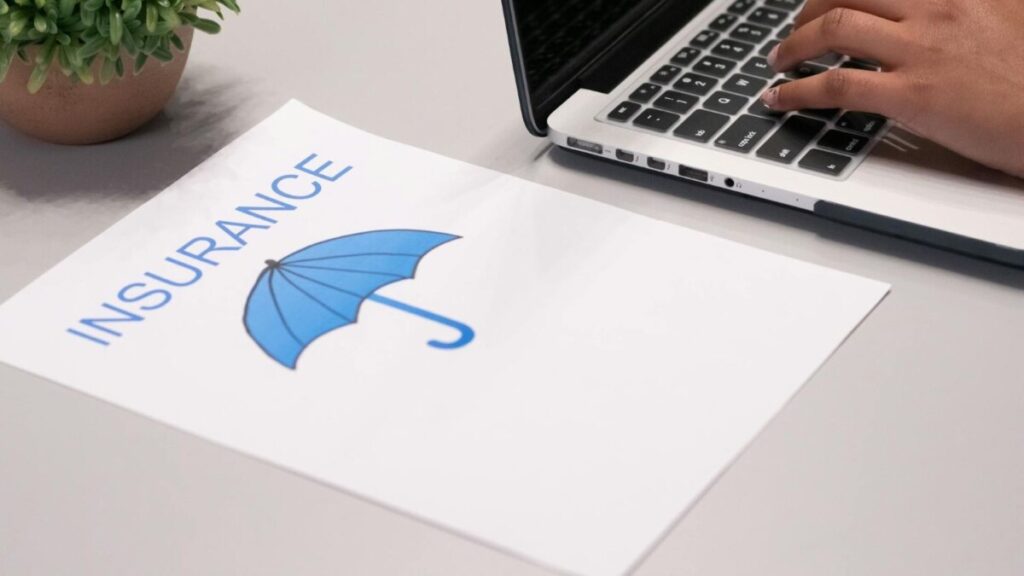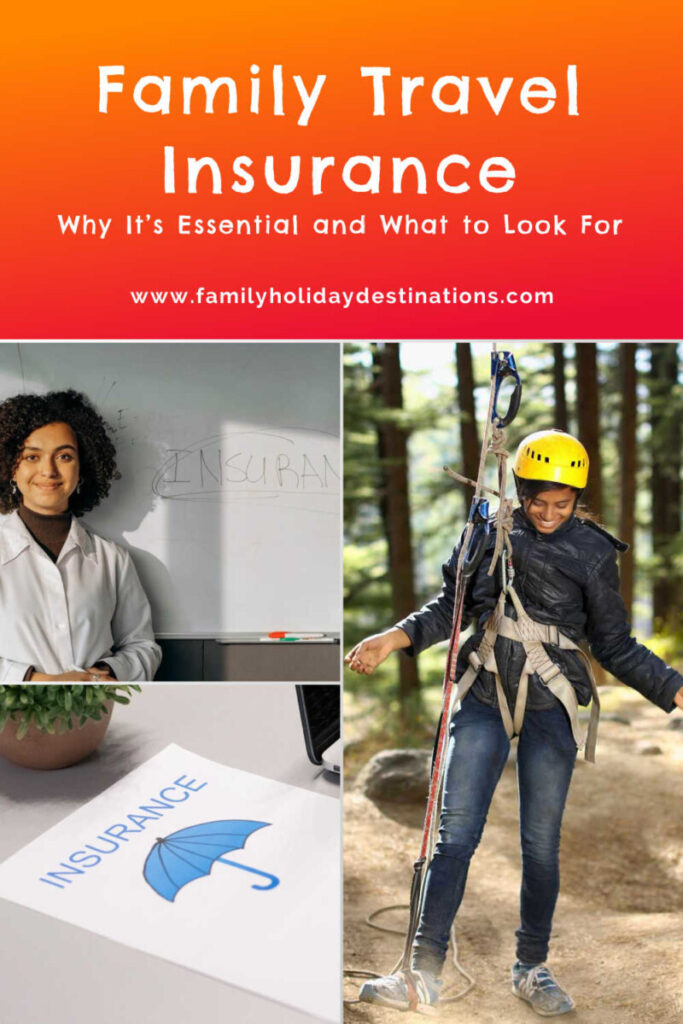When you’re planning a family holiday, it’s easy to get caught up in flights, accommodation, and where to find the best local ice cream. But there’s one thing that deserves just as much attention – family travel insurance.
Whether you’re heading overseas or exploring Australia, travel insurance is as important as your passport. It protects you and your family from costly surprises such as illness, lost luggage, cancellations, or even natural disasters. This guide breaks down what family travel insurance is, why it matters, and what to look for before you buy.
Key takeaways
- Family travel insurance is essential for protecting against unexpected costs during holidays, like medical emergencies or lost luggage.
- It covers both international and domestic travel, providing financial support and assistance when needed.
- When choosing family travel insurance, consider medical cover limits, coverage for pre-existing conditions, and cancellation policies.
- Always read the Product Disclosure Statement (PDS) to understand exclusions and claim procedures before purchasing.
- Compare policies and buy insurance at the time of booking to ensure coverage from the start.
Why family travel insurance is so important
Holidays don’t always go to plan, and when things go wrong, the costs can quickly add up. Medical emergencies, cancelled flights, or lost luggage can turn a dream trip into a financial headache.
Travel insurance provides both financial protection and practical support when you need it most. It can cover hospital bills, emergency evacuation, replacement of lost belongings, or reimbursement for cancelled bookings. Without it, you or your family may be left paying thousands (or even hundreds of thousands) out of pocket.
The Australian Government will not pay your medical bills overseas, and many hospitals in other countries require upfront payment or proof of insurance before treatment. Some destinations even require proof of travel insurance for entry.
Even in countries with reciprocal healthcare agreements (such as the UK or New Zealand), Medicare only covers essential treatment – not medications, GP visits, or medical evacuations. That’s where insurance steps in.
Do you need travel insurance for domestic trips?
While Medicare or private health cover can assist within Australia, domestic travel insurance can still be useful. It can:
- Reimburse costs if you have to cancel your trip.
- Cover lost or damaged luggage.
- Protect you from car hire excess charges if you rent a vehicle.
If your family is taking multiple trips throughout the year, consider an annual multi-trip policy. It can often be better value than buying separate single-trip policies.

What family travel insurance usually covers
Every policy is different, but most comprehensive plans include:
- Medical cover for illness or injury (including hospitalisation and evacuation).
- Trip cancellations or delays caused by illness, natural disasters, or other unforeseen events.
- Lost, stolen or damaged luggage and valuables.
- Car hire excess cover (reducing costs if your rental car is damaged).
- 24-hour emergency assistance for when things go wrong abroad.
Basic policies generally focus on medical emergencies only, while comprehensive travel insurance includes cancellations, delays, and belongings. Always read the Product Disclosure Statement (PDS) to understand exactly what’s covered and excluded.
What to look for in family travel insurance
Not all policies are created equal, and the cheapest one isn’t always the best value. When comparing family travel insurance, look beyond the price tag and focus on the details of what’s actually covered. Here are 10 things to pay attention to before you click “buy.”
#1. Medical cover limits
Medical emergencies are the most expensive part of any overseas mishap. Look for policies with unlimited medical cover, or at least a high limit that includes hospital stays, surgery, medication, and emergency evacuation.
Also check:
- Does it include medical repatriation (transport home to Australia if you can’t fly commercially)?
- Are ambulance and hospital fees covered in full?
- What’s the process for getting help in an emergency (24/7 helpline, direct billing to hospitals, etc.)?
#2. Pre-existing medical conditions
Declare every existing medical condition (yours and your children’s), no matter how minor. Conditions like asthma, diabetes or allergies may be covered automatically, but others (heart conditions, recent surgeries, or pregnancy) often need assessment or a small extra fee.
If you don’t declare it, your insurer can legally deny related claims later.
#3. Cancellation and delay cover
If you’ve booked flights, accommodation, or tours in advance, this section can save you thousands. Check:
- The maximum payout for cancellation costs.
- Whether it covers illness, natural disasters, airline strikes, or travel provider insolvency.
- The time delay threshold (many policies only pay out after six or twelve hours).
This is particularly important for families with school holiday bookings, when changing travel dates isn’t simple.
#4. Baggage and valuables
Most policies cover lost, stolen, or damaged luggage but the limits vary widely. Check:
- The per-item limit (some cap individual items at $250 – $1000).
- The total baggage limit (ranging from a few thousand up to $30,000).
- Whether valuables like laptops, cameras, or tablets are covered, especially if they’re used for work or school.
Tip: Keep receipts or photos of valuable items before you travel. Insurers often need proof of ownership before approving a claim.
#5. Adventure and activity cover
If your family is planning anything adventurous, such as skiing, snorkelling, ziplining or scooter hire, make sure it’s covered. Many basic policies exclude high-risk activities unless you pay for an upgrade. Also check age restrictions; some insurers require adult supervision or licensed guides for children’s adventure activities.
Make sure your insurance covers the fun stuff, like this Zipline in New Zealand below:
#6. COVID-19 and pandemic cover
While most insurers now include medical cover for COVID-19, not all include cancellation or quarantine costs. If you’re taking a cruise, double-check the fine print. Some insurers exclude COVID-19 cover for cruises entirely or limit it to medical-only.
#7. Car hire excess cover
Families renting a car can save hundreds by using the collision damage excess built into their travel insurance instead of the rental company’s add-on. Check the limit (usually between $3,000 and $8,000) and make sure the vehicle type is covered.
#8. Coverage for kids
Many family travel insurance policies automatically include children under 18 (or sometimes under 21) when travelling with a parent or guardian. Still, confirm:
- Whether your kids are covered if they travel separately (for example, a school trip).
- If the policy limits the number of children included for free.
#9. Excess and claim conditions
Every policy has an excess, which is the amount deducted from any payout. Think of it like a fee that needs to be paid to claim on your insurance (much like your regular car or house insurance). Lower excess = higher premium, and vice versa.
Choose a level you can comfortably afford if you need to claim. And check what proof is required, such as police reports, doctor’s certificates, or receipts.
#10. 24/7 emergency assistance
This is one of the most important features, especially for families. Look for insurers that offer 24-hour emergency hotlines and can directly coordinate medical care, transport, or evacuation. Some even provide multilingual support, which is incredibly important if you’re in a non-English-speaking country.

Final tip: read the fine print
The Product Disclosure Statement (PDS) may not be exciting reading, but it’s essential. Look specifically for:
- Exclusions (what’s not covered).
- Definitions (some words like “unattended luggage” or “relative” may surprise you).
- Claim procedures and required documents.
If you don’t have time to read it all, at least scan the summary table of benefits, general exclusions, and medical sections.
Checklist: what to review before buying family travel insurance
- Medical cover limit (preferably unlimited)
- Pre-existing medical conditions declared and accepted
- Cancellation and delay cover included
- Baggage and valuable item limits suit what you’re taking
- Activities and sports you plan to do are covered
- COVID-19 and pandemic cover verified
- Car hire excess cover included
- Children automatically covered under your policy
- Reasonable excess amount you can afford
- 24/7 emergency assistance contact provided
- You’ve read or skimmed the PDS for exclusions
Credit card travel insurance
Some credit cards include complimentary travel insurance if you pay for your flights or accommodation using that card. This can be convenient, but it’s not automatically activated and the level of cover varies.
Before relying on it, check:
- What you need to do to activate the cover.
- Whether it includes your spouse and children.
- The claim limits for medical and baggage cover.
- Any exclusions or age restrictions.
If you’re unsure, call your bank and request a copy of the PDS to confirm whether it meets your family’s needs.
Tips for getting the best deal
- Buy at the same time you book your trip: This way, you’ll be covered for cancellations from the moment you buy.
- Compare policies: Prices and cover vary widely between insurers.
- Look for member discounts: Some health or car insurers offer 10–15% off for existing customers.
- Read the fine print: Always check what’s included, what’s not, and how to make a claim.
- Consider what you’re really taking: If you’re not carrying expensive items, you can often save on baggage cover.
How to make a claim
If something goes wrong, contact your insurer as soon as possible. Most insurers require claims to be lodged quickly – often within 24 hours of the incident. Keep copies of receipts, police reports, and medical documents.
You may need to provide:
- Proof of travel (flight details or accommodation bookings).
- A doctor’s or police report for medical or theft claims.
- Receipts or photos of lost items.
Being organised will make the claims process smoother and faster.

The bottom line on family travel insurance
There are plenty of ways to reduce the cost of your holiday, but skipping the family travel insurance should never be one of them. Whether you’re road-tripping across Australia or flying halfway around the world, family travel insurance is a necessity and not a ‘nice to have’. It’s not about expecting the worst – it’s about being prepared for the unexpected.
A little planning now can save you a lot of stress (and money) later, helping you get back to what really matters – enjoying the adventure with your family.
Frequently Asked Questions about Family Travel Insurance
Buy your policy as soon as you book your trip. This ensures you’ll be protected if you need to cancel before departure due to illness or other unforeseen events.
Most insurers now provide some level of COVID-19 cover, typically for medical costs if you test positive while travelling. However, not all policies cover trip cancellations, quarantine expenses, or border closures. Read the Product Disclosure Statement (PDS) carefully to understand what’s included.
Yes. Even when travelling within Australia, domestic travel insurance can be useful. It can cover cancellations, delays, lost baggage, or car hire excess costs. While Medicare handles medical expenses, domestic policies can help if you’ve prepaid accommodation or flights and can’t go due to illness or emergencies.
Always declare any existing medical conditions when applying for travel insurance. Some conditions, such as asthma or mild allergies, are automatically covered, but others may require an assessment or an extra fee. If you don’t declare a condition, the insurer can refuse to pay related claims later.
Only if it suits your needs. Complimentary credit card travel insurance can be handy but often comes with activation rules, lower benefit limits, or exclusions for kids. Check your card’s policy details and confirm it’s activated before you travel.
Where to next?
📌 Save this article to Pinterest so you’ll have it handy when planning your own trip.


Let me know what you think!